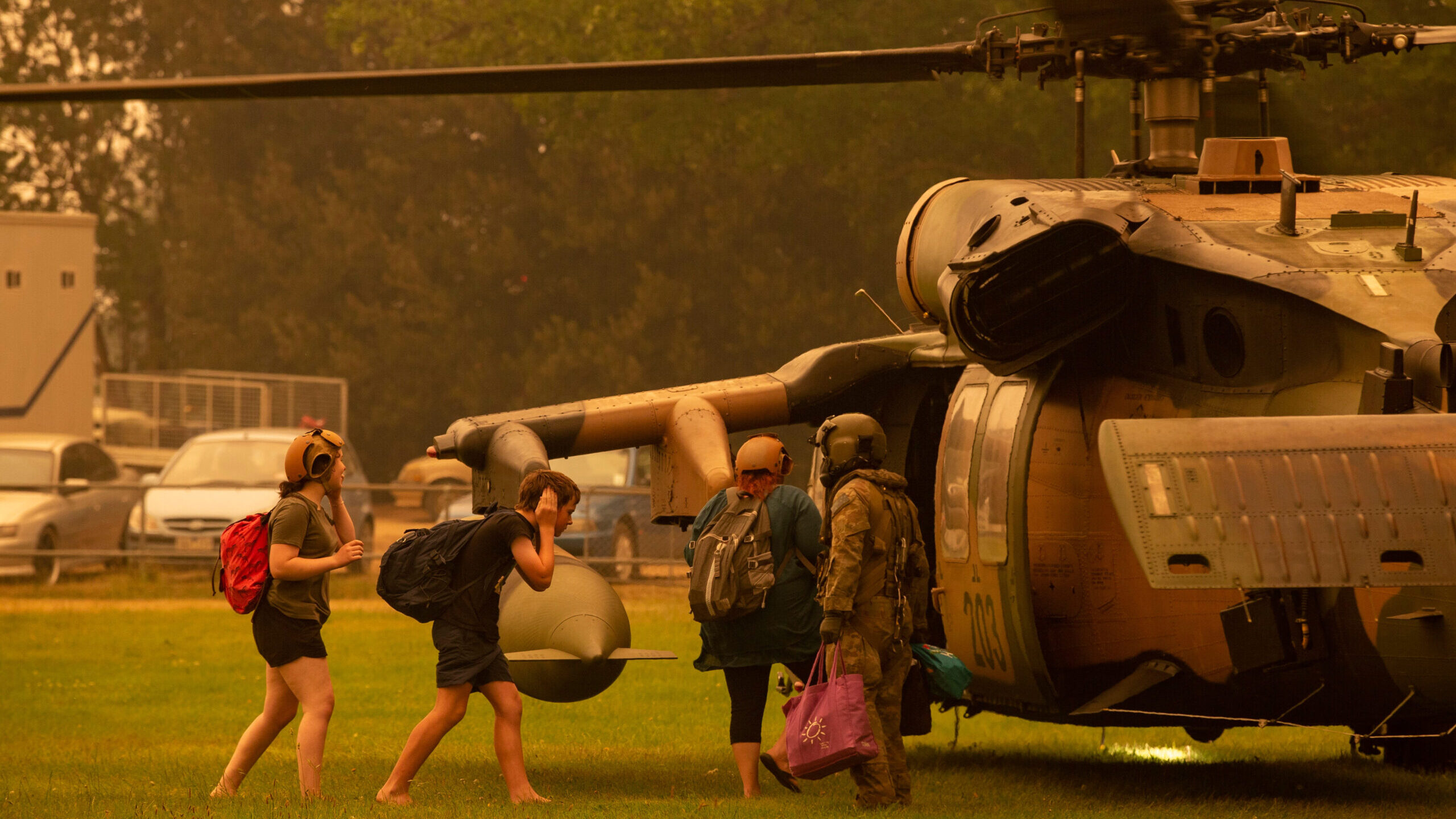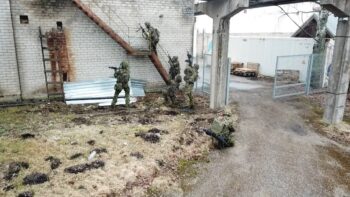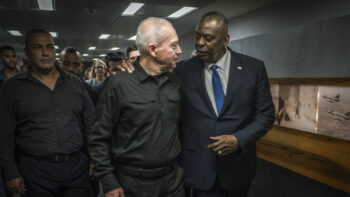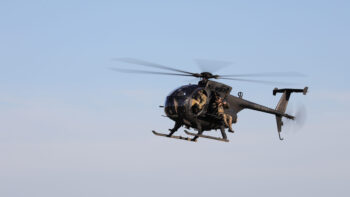
An Australian Army soldier helps people evacuate onto a Blackhawk helicopter during Operation Bushfire Assist 19-20.
Credit: ADF Cpl. Nicole Dorrett
SYDNEY — “The Australian Defence Force’s MRH-90 Taipan helicopters will not return to flying operations before their planned withdrawal date of December 2024.”
That Sept. 29 statement from the defense department was the death knell in Australia for the European-made MRH-90, a controversial helicopter that is being replaced here by the American-made Black Hawk. Australia is the most recent national customer to scrap use of the helos, joining Norway and Sweden, after those countries said they experienced low availability rates and high maintenance costs.
The utility helicopter fleet here is particularly important as Australia’s summer approaches, bringing with it the daunting prospect of widespread deadly fires and, possibly, floods. Australia depends on the military for a key part of its response to these increasingly damaging aspects of climate change.
The government’s announcement about the Taipan’s grounding of the 19 helos came after a high-profile and deadly accident during the recent Talisman Sabre exercise. Four died in that crash in the Whitsundays. The Taipan fleet was already due to be retired no later than December of next year, and the defense department announcement notes that its decision “does not presuppose or any way suggest the outcome” of the investigation into that crash.
NHInudstries, a joint venture between Airbus, Leonardo Helicopters and Fokker Aerostructures that sells variants of the helicopter around the world, “express[ed] its disappointment” in the Australian Defence Force’s (ADF’s) decision.
“The NH90 helicopter is the largest military helicopter programme in Europe, the NH90 is the optimal choice for modern operations thanks to its full-composite airframe with a large cabin, its excellent power-to-weight ratio and its wide range of role equipment,” the company said in a statement the same day as the Australian announcement.
As for the fatal crash, the statement said that initial analysis has not identified any failure or malfunction related to the aircraft’s design, and it has not recommended “any additional measures” to be taken by the rest of its customers.
In Australia, the previous government had made the decision to replace the Airbus Helicopter-made Taipans with Lockheed Martin’s Black Hawks, although the decision to buy the latter was formally made in January by Anthony Albanese’s Labor Government. The government statement noted that the first three Black Hawks have already arrived in Australia and began flying last month.
Much of the response to the government’s grounding decision focused on speeding up the purchase and deployment of the 40 Black Hawks. Shadow defense minister Andrew Hastie welcomed the government’s decision.
But, as often happens with parliamentary systems, the opposition blamed the government for not replacing the Taipans “fast enough.” Hastie said in a statement that “the Army may be critically without sufficient replacement Black Hawks to transition away from the grounded Taipans.” That could, he said, mean the Australian Defense Force would “not have enough helicopters to perform missions, including training and exercises with international partners.”
Defense Minister Richard Marles admitted that Australia could be short on helicopters for a year or more. But the government statement said CH-47F Chinooks, Tigers and MH‑60R Seahawks will keep flying and “continue to provide a robust and ready aviation capability to the Australian people.”
“To help mitigate further impacts on Army’s operations and training, the government has been exploring options to accelerate the delivery of Black Hawks to Australia and for aircrew training with our international partners,” the ADF said. “The MRH-90 Taipan workforce is highly skilled and Defence is working with industry partners to ensure they are supported through the capability transitional period.”
The investigation into the cause of the Witsundays crash is ongoing and is likely to continue into next year. The Taipan fleet had been ordered grounded until, the results of the investigation were known.






















